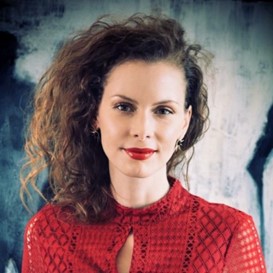What PR has to offer marketing strategy and tactics
We chat with PRLN member Samantha Stark from 160over90 about how PR can lead integrated external comms strategy, her comms wishlist and more.

Much has been made in recent years of PR pros needing to adopt the skill set of their marketing colleagues. The ability to tie PR work to revenue and bottom-line success has been accelerated by marketing pros’ sophistication with digital tracking tools.
Even such concepts as the marketing funnel have been adopted by PR pros and the PESO model shows how traditional earned media must work in concert with paid placements and social media strategy to drive results. Yet, integration of marketing and PR has also changed how marketers must compete for attention and new business.

In an attention-starved marketplace, the PR skill to earn attention inherent in “earned media” has never been more valuable.
“Where the marketing industry is right now is an earned environment,” says Samantha Stark, executive vice president with 160over90 and a member of the PR Daily Leadership Network.
“And to me, that is what comms people are trained in. PR people are trained in earning attention because we have had to earn the attention of some of the most difficult stakeholders in the world, which are media.”
When PR should lead
So, how can a PR lens bring value to the full integrated comms strategy? If you start by thinking about earning attention, Stark explains, you have to change how you approach everything from the creative brief to key performance indicators (KPIs).
As an example, she references how her agency has changed its approach to experiential marketing efforts by starting with a PR pro’s outlook.
“Most people do an event because they want to not just have that on-the-ground engagement, they want to have a story about that event,” Stark says. “They want that event to be so interesting that it’s going to be shared on social media.” Those PR KPIs are in the brief for a new campaign 90% of the time, Stark estimates.
PR pros must be involved early in the creative process to be able to offer counsel on what might generate a headline. A clever marketing idea might not feature the spokesperson a reporter needs to write the story, or you could be replicating something your competitors have already done—making your big idea old news.
In Stark’s view, PR pros are uniquely suited to the agile, real-time engagement that is necessary to generate news coverage and online conversation. But it’s a give and take with creative and marketing pros on any integrated team.
“Creatives constantly push us,” says Stark. And to decide if a project should be led by PR or marketing, 160over90 analyzes the specific needs of the project.
“The way that we approach solving problems is that it is channel agnostic,” says Stark, always with an eye on what will be the best use of available assets to create something “compelling.”
The social media component
A big part of earning attention and driving the conversation these days is social media—and 160over90 is in the midst of updating its social content studio to try and meet the ever-changing needs of online audiences. By combining the video expertise of its advertising side with social producers who are fluent in the specific formats of platforms and the latest trends, 160over90 hopes to give social media clients an edge.
“We’re merging it all together,” shares Stark.
And that has much to do with how social media has risen to the top of the media hierarchy. So, how does social media play its unique role in overall comms strategy?
“To me, social media is identifying things that are bubbling up first,” says Stark, with a nod to the importance of social listening. “It’s how you’re getting a good sense of audience sentiment, what people are feeling and how you should be communicating.”
It’s also where personalization is at its best, particularly with the rise of influencer marketing, which 160over90 now just calls “influence” or “creator marketing.” But to be a meaningful part of the communications strategy, social media must have purpose.
“What are you laddering up and what are you trying to solve?” Stark says.
And social media can be a crucial proving ground, where you can establish the importance and audience for your stories which can then help get other media coverage. You can show a TV news producer your relevance by getting a bunch of shares online. In a 24-hour cycle that moves at lightning speed, only the brands that are using social media to drive news are going to break through.
“If you’re not using social in that manner, then you’re not going to be a part of the cycle in time for it to be meaningful and to benefit your brand,” Stark says.
This article is part of our PR Daily Leadership Network membership. Members can read the full article by joining this exclusive group of comms leaders.
The PESO Model© was created by Spin Sucks







